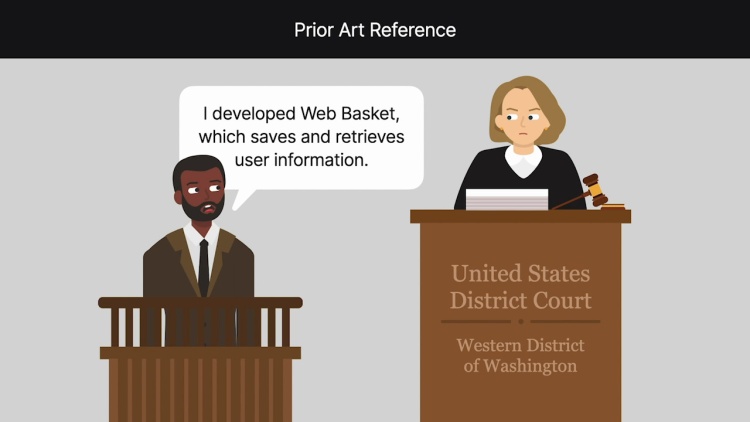Amazon.com, Inc. v. Barnesandnoble.com, Inc.
United States Court of Appeals for the Federal Circuit
239 F.3d 1343 (2001)

- Written by Eric Cervone, LLM
Facts
Amazon.com, Inc. (Amazon) (plaintiff) was involved in electronic commerce, which is also called ecommerce. Amazon owned a patent known as the ‘411 patent. The ‘411 patent described a method of allowing online shoppers to complete their purchases with one-click. Amazon developed the patent to cope with the frustrations of ecommerce’s traditional shopping-cart model. The ‘411 patent sought to reduce the number of steps necessary to place an online order. Amazon sued Barnsandnoble.com (BN) (defendant) for patent infringement. Amazon moved for a preliminary injunction to prohibit BN’s use of a feature like the ‘411 patent. BN argued that Amazon’s patent was invalid because there were several prior-art references showing this idea and technology already existed in the public domain before Amazon developed its version. For instance, BN identified a prior CompuServe Trend system that appeared to have used single-action ordering technology within the scope of the ‘411 patent. Additionally, BN cited the Web Basket online ordering system. The Web Basket system utilized cookies that stored the customers’ information for later retrieval. The Web Basket system also arguably anticipated components of the ‘411 patent. Despite these examples of possible prior art, the trial court concluded that Amazon had demonstrated that BN likely infringed the ‘411 patent and granted Amazon a preliminary injunction. The appeals court also found BN had infringed on the ‘411 patent. The appellate court then turned to whether the ‘411 patent was valid.
Rule of Law
Issue
Holding and Reasoning (Clevenger, J.)
What to do next…
Here's why 899,000 law students have relied on our case briefs:
- Written by law professors and practitioners, not other law students. 47,000 briefs, keyed to 994 casebooks. Top-notch customer support.
- The right amount of information, includes the facts, issues, rule of law, holding and reasoning, and any concurrences and dissents.
- Access in your classes, works on your mobile and tablet. Massive library of related video lessons and high quality multiple-choice questions.
- Easy to use, uniform format for every case brief. Written in plain English, not in legalese. Our briefs summarize and simplify; they don’t just repeat the court’s language.





